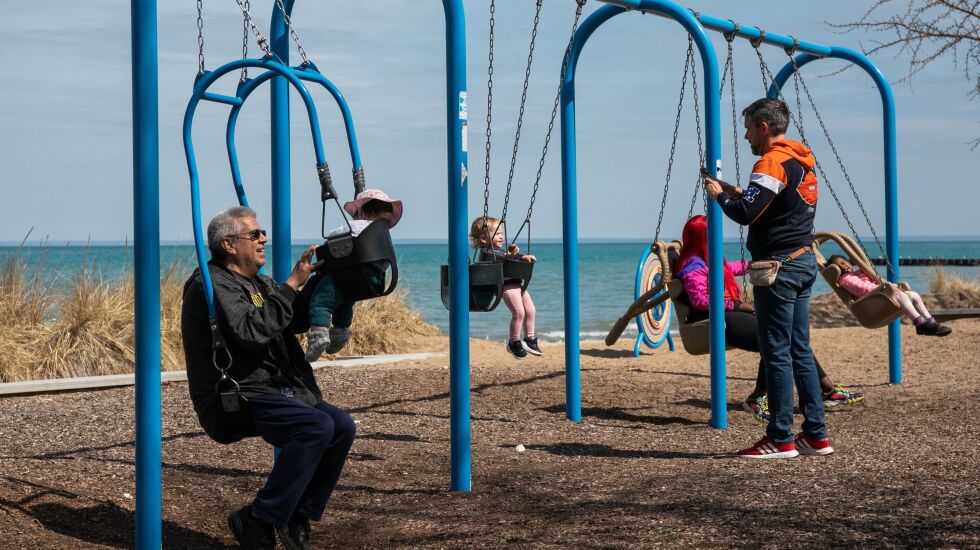
After the U.S. Census Bureau released data from the 2020 decennial count, a group of Sun-Times journalists met regularly for months to figure out what the numbers were telling us about how our city was evolving.
Chicago continued to be a diverse city, but we also knew it has a history of redlining and segregation and many neighborhoods that have little diversity.
That’s when we decided to try to answer a question: Which community area most closely resembled the overall racial/ethnic makeup of the city? Could any neighborhood be dubbed “Little Chicago?”
With the help of Sun-Times data journalist Jesse Howe, we soon found the answer on the Far North Side: Rogers Park.
There, about 40% of residents identify as white, nearly 23% as Latino or Hispanic and nearly 25% as Black, according to our analysis of census data. Another 7% identify as Asian American.
Across Chicago, about 31% of residents identify as white, nearly 30% as Latino or Hispanic, about 29% as Black and nearly 7% as Asian American.
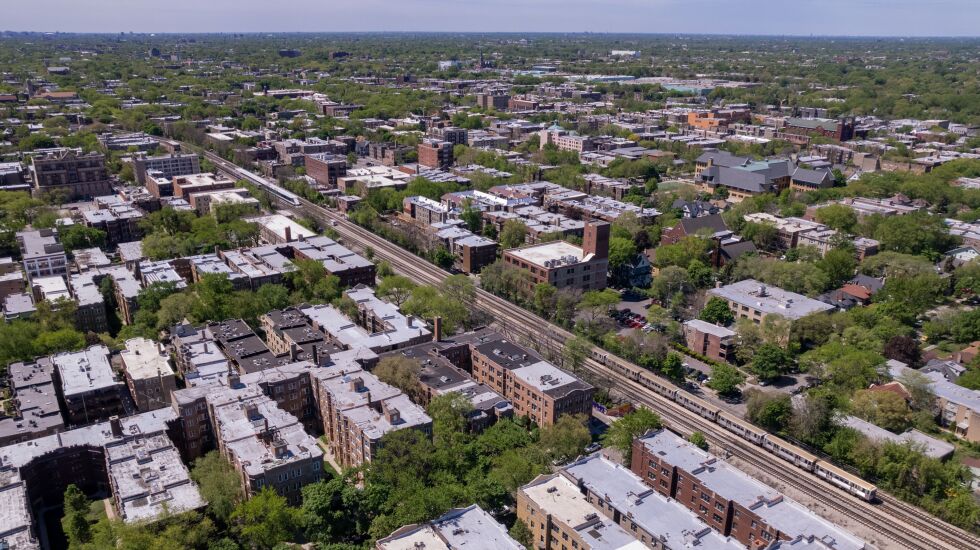
To do the data analysis, Howe pulled the most detailed 2020 census data available from the U.S. Census Bureau and cross-referenced it with a community map from the city. Using GIS mapping software and a coding language called javascript, he went through each census block to get the percentage of each racial group in the area. In order for a block to have a majority racial makeup, it needed to have a percentage of 50% or higher.
The analysis found that about half of the city blocks within the neighborhood didn’t have a majority racial makeup, an indication that a resident in this pocket of the city is more likely to have diverse neighbors.
Beyond the numbers, we wanted to center the story on people, which is why we wanted the piece to be driven by visual elements.
We looked for spaces — ranging from parks to businesses — where people from different ethnic and racial backgrounds gathered.
The challenge was to create a set of images that captured the area’s diversity while also conveying a sense of homogeneity and community. It was a photo story about the census, but we also envisioned it as a portrait of the neighborhood. Visual journalist Pat Nabong was not only concerned about capturing Rogers Park as a place but also about presenting the neighborhood as a character.
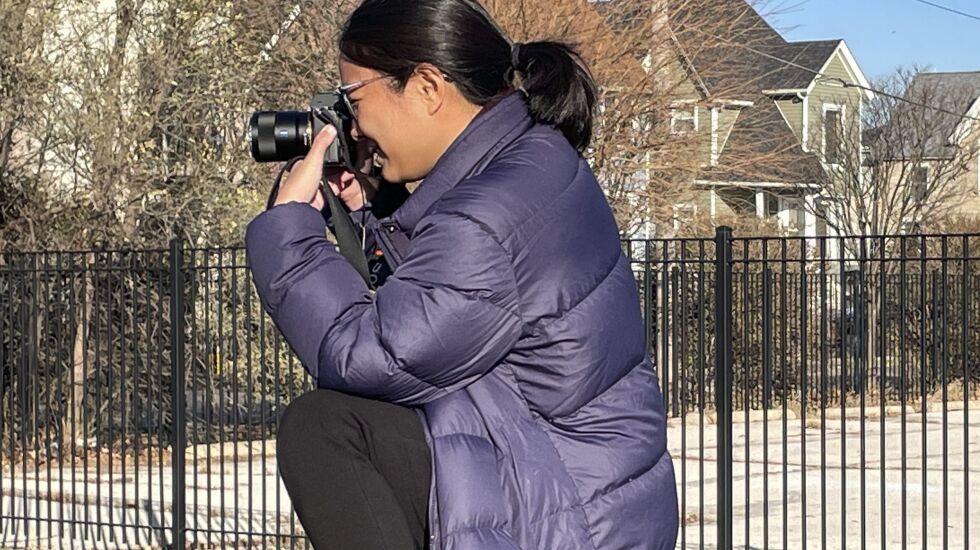
Because of this, it was important for us to highlight areas that were significant to the community, so we asked members of a Rogers Park neighborhood Facebook group which places were historically and culturally significant to them. More than 80 people responded.

For at least two months — while also working on other stories — we learned about the area by talking to as many people from diverse backgrounds as possible about what led them to Rogers Park, why they decided to settle there, what they loved about the neighborhood and how they’ve seen the area change.
We interviewed the Rogers Park Business Alliance and those behind the Residents of Rogers Park Instagram account. We researched the history of the community and how it came to be a hub for immigrants and refugees.
The diversity of Rogers Park was obvious on stretches of Clark Street, one of the neighborhood’s commercial corridors, where someone can walk from a store selling kosher meats to an Ethiopian restaurant to a Mexican grocery store.
We also drove down Howard Street and Sheridan Road, where we visited many small businesses that we used as starting points to find more sources.
Diego Barzola, whose family is Peruvian, and Dayana Piedra, who recently moved from Mexico, were sharing a meal at Taste of Peru, a family restaurant that opened in the late 1990s.
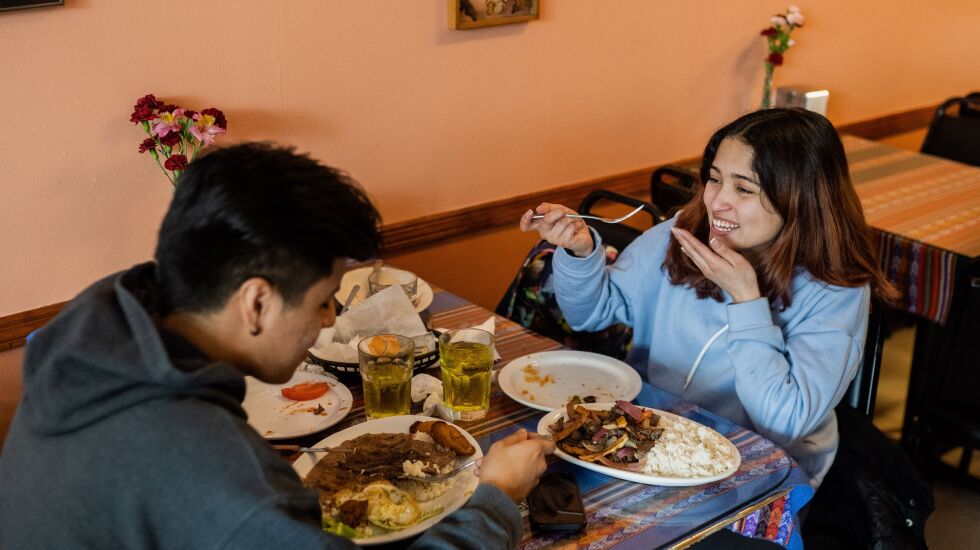
“You can meet people from literally, like, all around the world” in Rogers Park, Piedra told us.
She said she’s met a friend from Ecuador, who shared photos of the country and told her about the food and taught her about his country’s slang.
“All of them [have been] telling me of their culture that I never had any kind of, like, contact with,” she said. There are “all these things that I just would’ve never seen if I didn’t live in Rogers Park.”

As we talked to more people in Rogers Park, we decided to include vignettes that highlighted the neighborhood’s diversity.
The convergence of cultures could be seen at Freddie Lee’s Modern Kung Fu, where people who work and live in Rogers Park learned martial arts alongside people from other neighborhoods and the suburbs. At Pottawattomie Park, Boy Scouts from different races and religious backgrounds worked together to build a path. At Caribbean American Baking Co., a steady stream of longtime customers were friendly with one another and with staff. And at Devon Market, a variety of languages can be heard spoken by customers shopping for Korean-style noodles, dolmas, Mexican-style rice and imported goods from the Middle East.
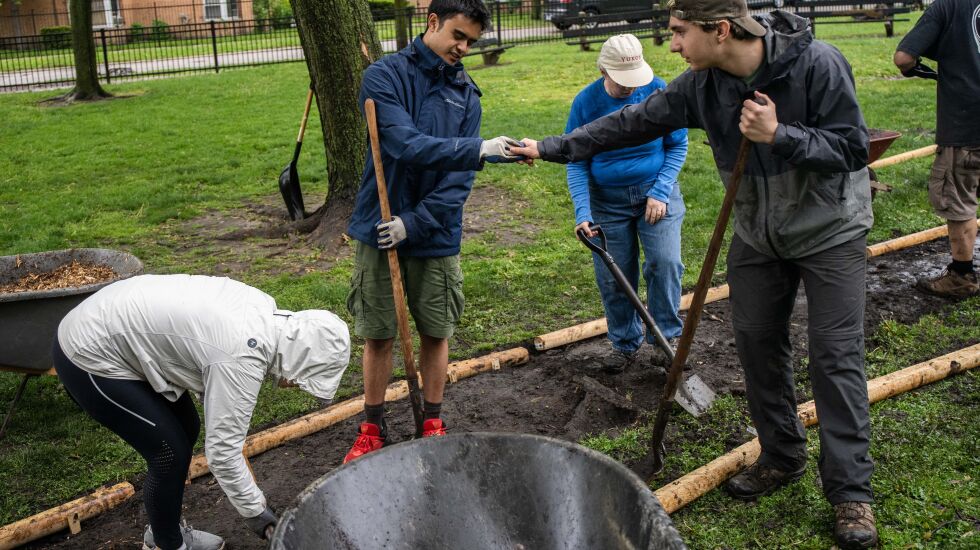
While some of the people we interviewed grew up in Rogers Park, others had moved there.
“It feels really neighborly,” said resident Shweta Moorthy. “And we look out for one another, and it feels really different from the other places that I’ve lived at before.”
Pat Nabong is a Sun-Times visual journalist. Elvia Malagón’s reporting on social justice and income inequality is made possible by a grant from the Chicago Community Trust.







